In October 2020, Microsoft announced the original Surface Laptop Go – a nod to the “Go” theme that started with 2018’s Surface Go tablet PC. By “Go,” Microsoft means smaller, lighter, and more affordable than the bigger Pro models. It’s an excellent play on words, and it matches expectations.
The company is back with the Surface Laptop Go 2, and Microsoft thankfully doesn’t mess with a winning formula. While it can be considered a minor update, all the small changes, including differences in pricing, make it a much better value today.
What does that new 11th Gen Core i5 processor deliver compared to 2020’s 10th Gen? Is battery life any better? And what do I mean by a better value? Let’s find out.
Price, availability, specs, and what’s new
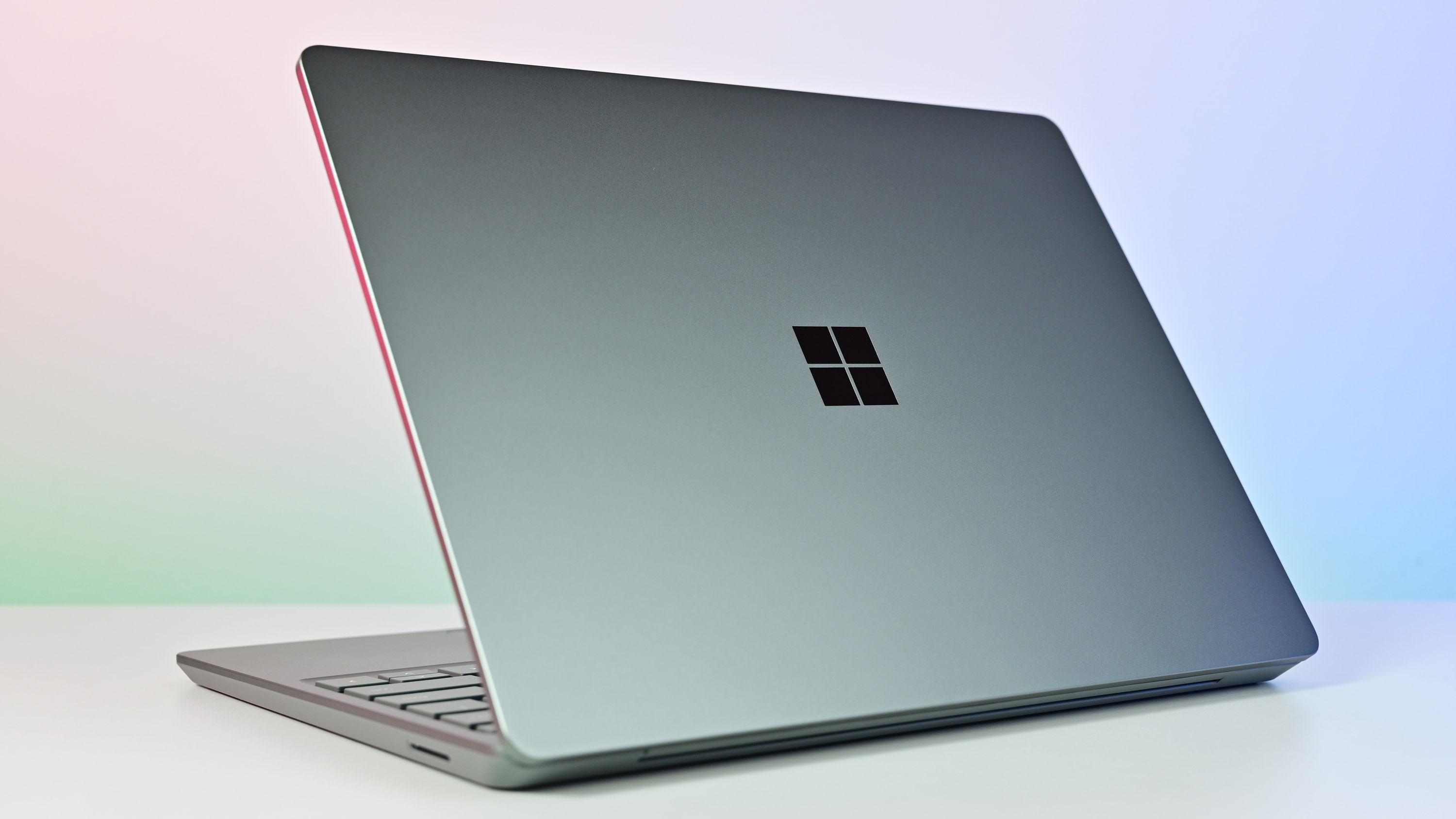
Surface Laptop Go 2 is now available from Microsoft.com, Best Buy, and Amazon.com.
There is only one processor type for Surface Laptop Go 2: Intel Core i5-1135G7 with Intel Iris Xe graphics for the GPU.
Pricing begins at $599.99 for the model with 4GB of RAM and 128GB of storage with no fingerprint reader. That is a higher price than $549.99 for the original Laptop Go, but there is a big difference: You now get twice as much storage (128GB vs. just 64GB), and it is a PCIe SSD, which is much faster than the original 64GB eMMC. For an extra $50, the Surface Laptop Go 2 is a much better deal and experience.
| Price | SKU |
|---|---|
| $599 | Intel Core i5, 4GB RAM, 128GB SSD |
| $699 | Intel Core i5, 8GB RAM, 128GB SSD |
| $799 | Intel Core i5, 8GB RAM, 256GB SSD |
The mid-tier model is the same price as before: $699 with 8GB of RAM and 128GB of storage.
The top tier, the same as our review unit, features 8GB of RAM and 256GB of storage. It’s now just $799, which is $100 cheaper than the $899 for the 2020 Surface Laptop Go with the same configuration.
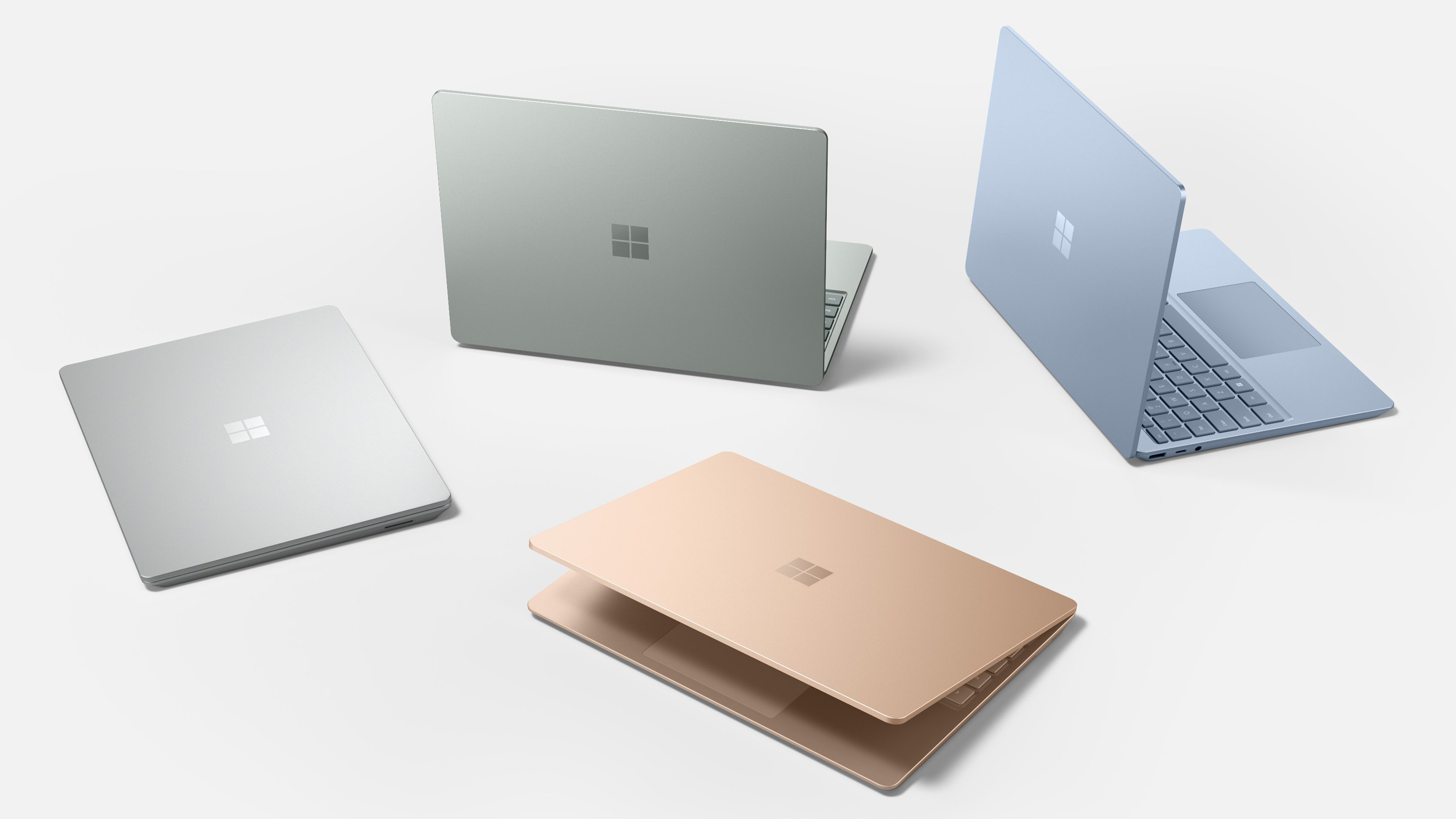
There are four color options for Surface Laptop Go 2: Platinum, Ice Blue, Sandstone, and new for 2022, Sage (reviewed here).
| Category | Spec |
|---|---|
| OS | Windows 11 Home |
| Processor | Intel Core i5-1135G7 |
| RAM | 4GB or 8GB LPDDR4x |
| Graphics | Intel Iris Xe Graphics |
| Storage | 128GB or 256GB SSD |
| Display | 12.4-inch 1536 x 1024 (148 ppi) 3:2 PixelSense Touch display |
| Ports | 1x USB-A, 1x USB-C, 3.5mm audio jack, Surface Connect port |
| Audio | Omnisonic Speakers with Dolby-Audio Premium |
| Wireless | Wi-Fi 6: 802.11ax, Bluetooth 5.1 |
| Camera | 720p HD f2.0 camera |
| Security | Windows Hello fingerprint |
| Battery | Up to 13.5 hours |
| Dimensions | 10.95 x 8.12 x 0.62 inches |
| Weight | 2.48 lbs (1,127g) |
| Color | Platinum, Ice Blue, Sandstone, Sage |
| Availability | June 7 |
| Price | $599, $699, $799 |
While everyone will focus on the newer processor, quite a few cascading effects and new features summarize the differences between Surface Laptop Go and Surace Laptop Go 2. Here are all the changes:
- Bluetooth 5.1 (instead of 5.0)
- No 64GB eMMC version, just 128/256GB PCIe 3.0 SSD
- Intel Core i5-1135G7 (up from i5-1035G1)
- Intel Iris Xe graphics (instead of UHD)
- Improved 720P HD f/2.0 webcam
- Better repairability for display and keyboard
- New Sage colorway
- Windows 11 Home (instead of Windows 10 in S mode)
While those are not earth-shattering, they are all welcomed changes, as we’ll see when comparing benchmarks between the older and newer Surface Laptop Go models.
Design and features
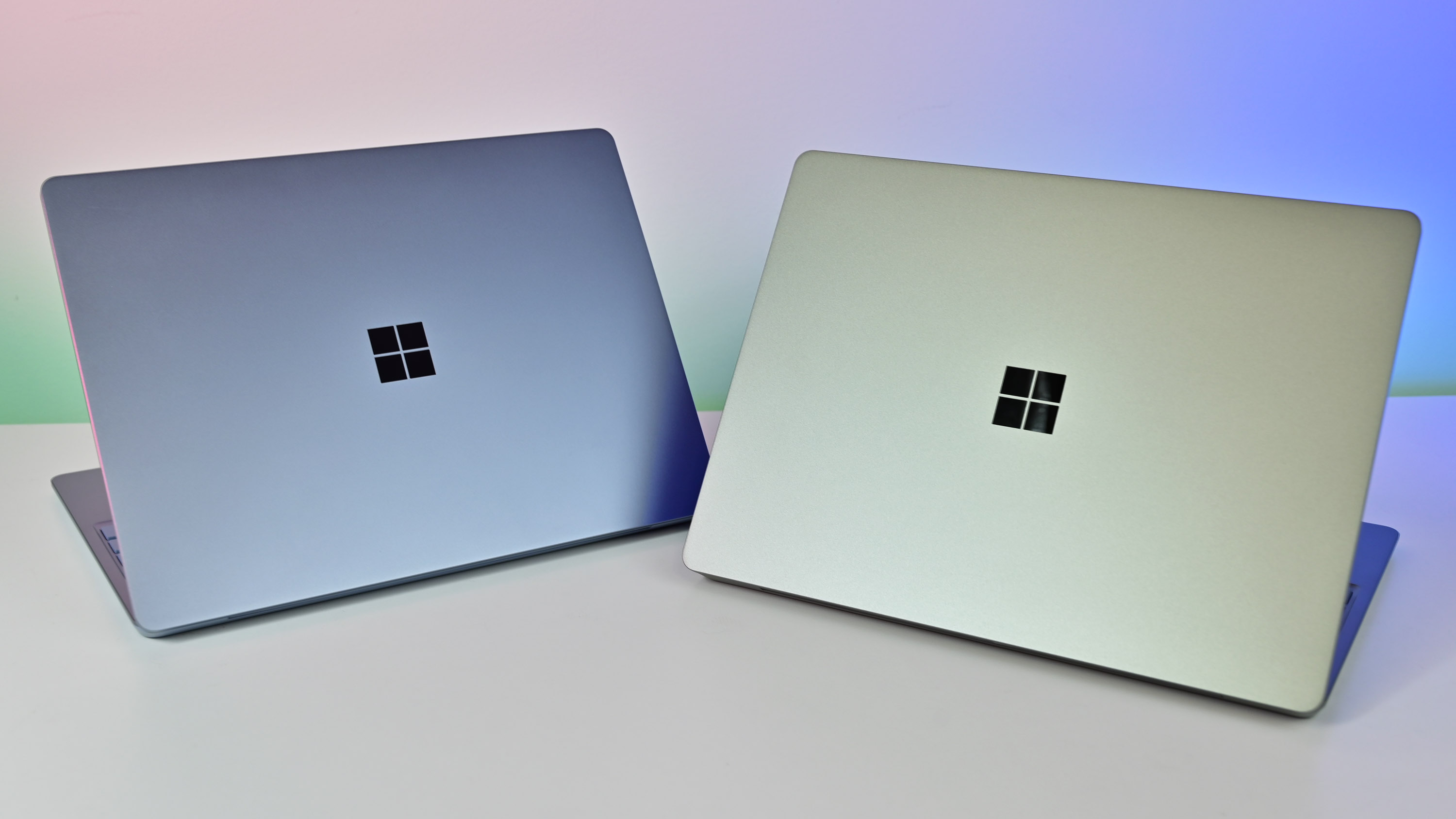
Surface Laptop Go 2 is relatively easy to describe: It’s a smaller, lighter version of the premium Surface Laptop series, and it’s a traditional clamshell laptop but with a touch display. While the look is very similar to Surface Laptop, the Surface Laptop Go 2 drops many top-tier features like a high-resolution display, better audio, and webcam but does so without sacrificing the overall experience especially at this price point.
Surface Laptop Go 2 ships with full Windows 11 Home out of the box. That’s a difference from 2020 when it shipped with Windows 10 in S mode – a slightly locked-down version of the older OS.
About 50 percent of the Surface Laptop Go chassis is aluminum (lid and keyboard deck), but the bottom half is a soft-touch polycarbonate. That choice works well as the material offsets costs, make it more durable, and reduces the weight to just 2.48lbs (1.12kg), which is up a hair from the original’s 2.45 pounds (1.1kg) weight.
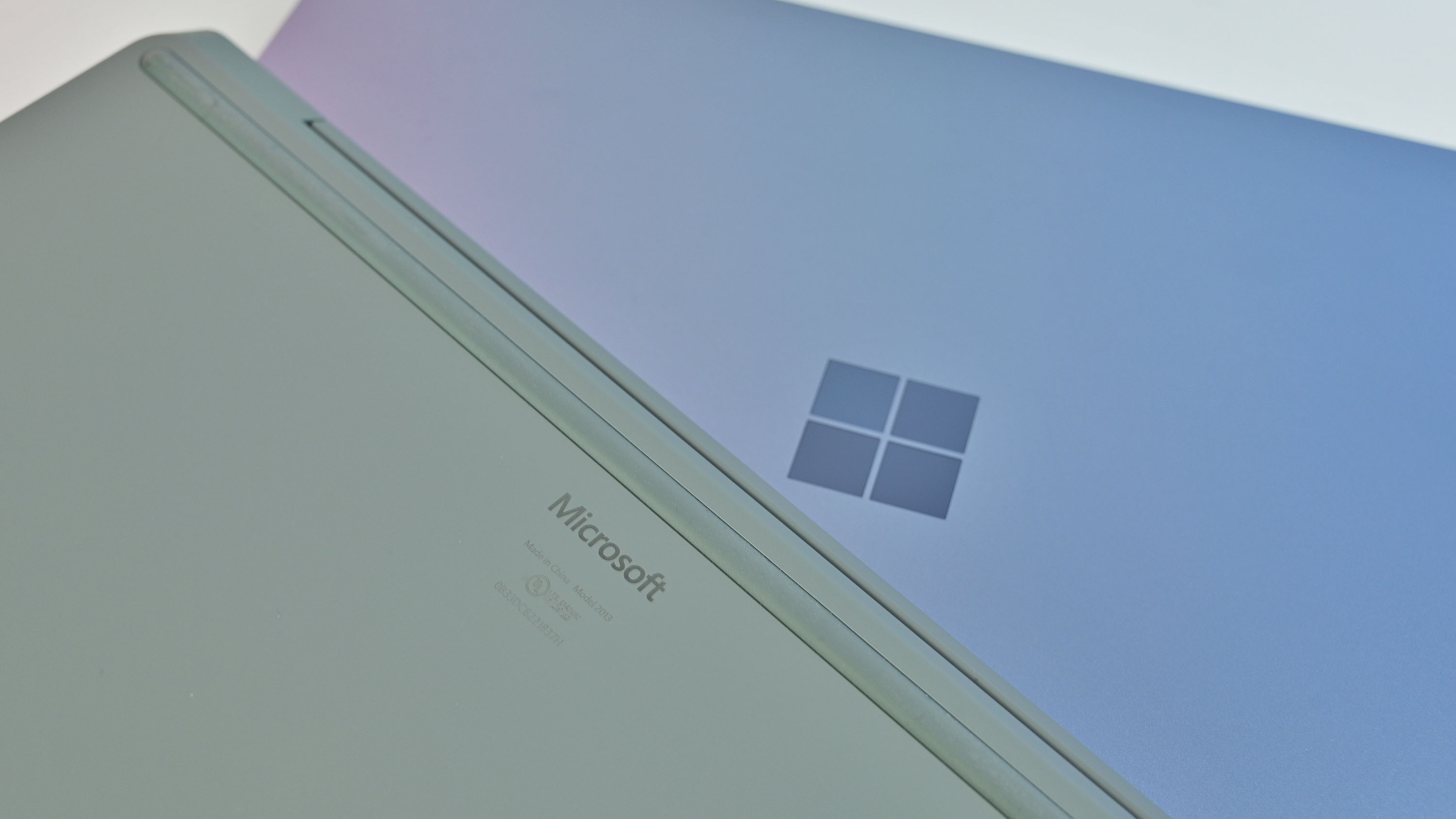
The use of sage green for 2022 is a welcomed option. Like the other colors, including ice blue, it’s a subtle color that is not overwhelming and won’t draw much attention, but just enough for those who want a little flair. In specific lighting, it looks darker; other times, it seems almost like platinum, and it has a lovely shimmer.
The new processor is the star of the show here. While both the 10th Gen and 11th Gen Intel processors feature four cores with eight threads, the speed improvement is significant with the newer model. For the older Core i5-1035G1, the base frequency is 1GHz and can turbo to 3.60GHz with up to 25W TDP. The newer Core i5-1135G7 has a higher base frequency of 2.4GHz but can now turbo to 4.20GHz with up to 28W TDP.
Connectivity is basic but modern. Microsoft updated the Bluetooth stack to 5.1 instead of 5.0, which should help with battery life and the quality of the connection. Wi-Fi 6 AX is on board, too, and while not the most recent (and minor) Wi-Fi 6E revision, it is more than adequate for this laptop class.
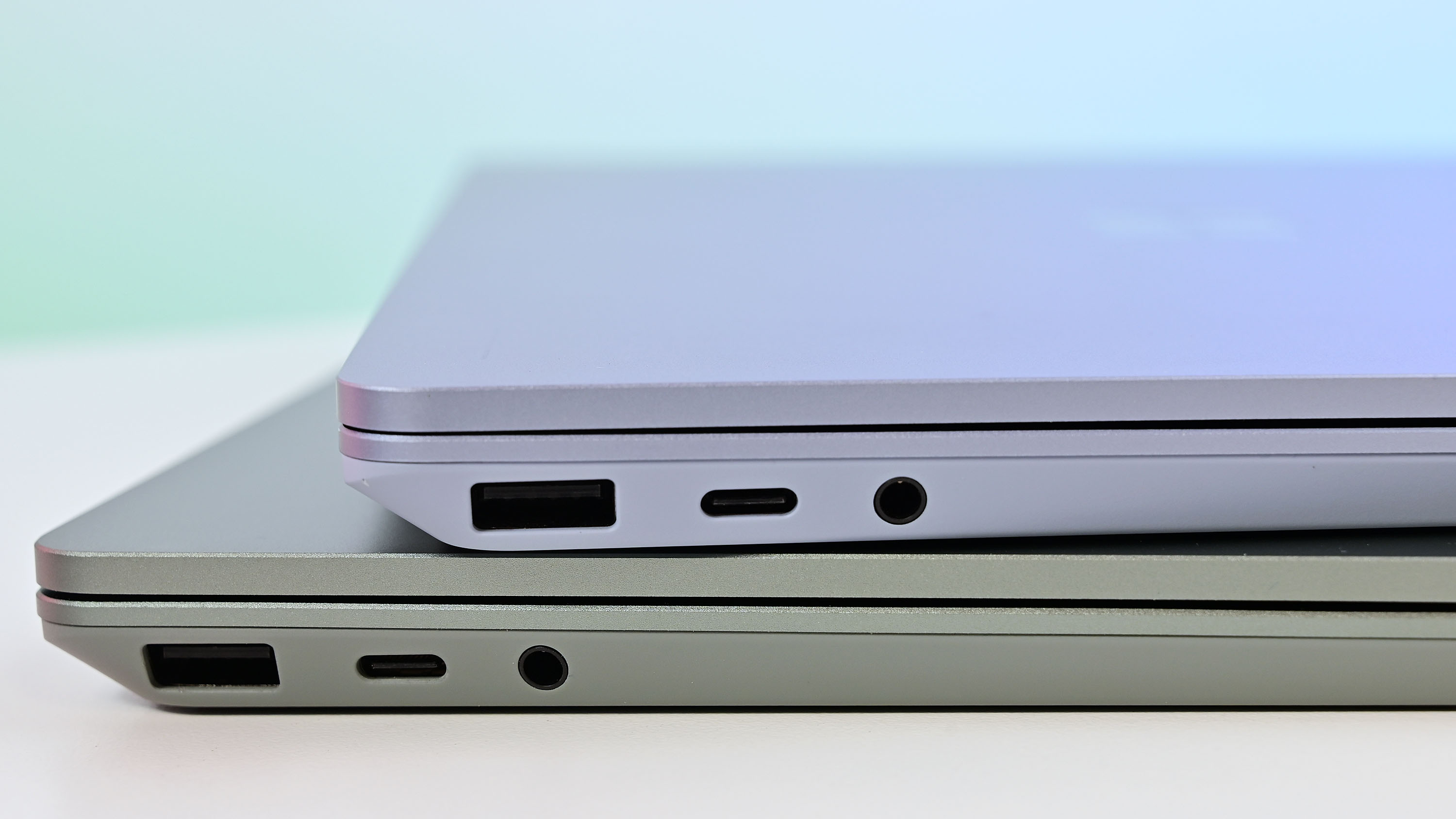
A similar story is told for the onboard Intel graphics. The older model used Intel UHD with 32 execution units, while the 11th Gen Iris Xe almost triples that to 80. Though Surface Laptop Go 2 is far from a gaming PC, the new Xe GPU means you can output to 7680×4320@60Hz instead of just 5120×3200@60Hz and power up to four displays instead of just three. You also now get DirectX 12.1 support (instead of 12.0) for light gaming.
Ports are few but standard, with just three on the left side: Type-A (10MB/s), Type-C, and one headphone/mic jack. Type-C supports display out, data, and charging. The expected Surface Connect charge port is on the right side, which also supports fast charging. There is no Thunderbolt 4.
For power, Microsoft includes a 39-watt Surface Connect charger. You can also use any Type-C charger, as Laptop Go can handle up to 60-watts and supports Fast Charge by either method.
There’s no way else to say that the fit and finish of the Surface Laptop Go 2 are fantastic. There’s no flex in the keyboard deck, the materials feel premium (especially the aluminum), and it looks clean with no labels or stickers. You can even open the lid with one hand.
Display, audio, and camera
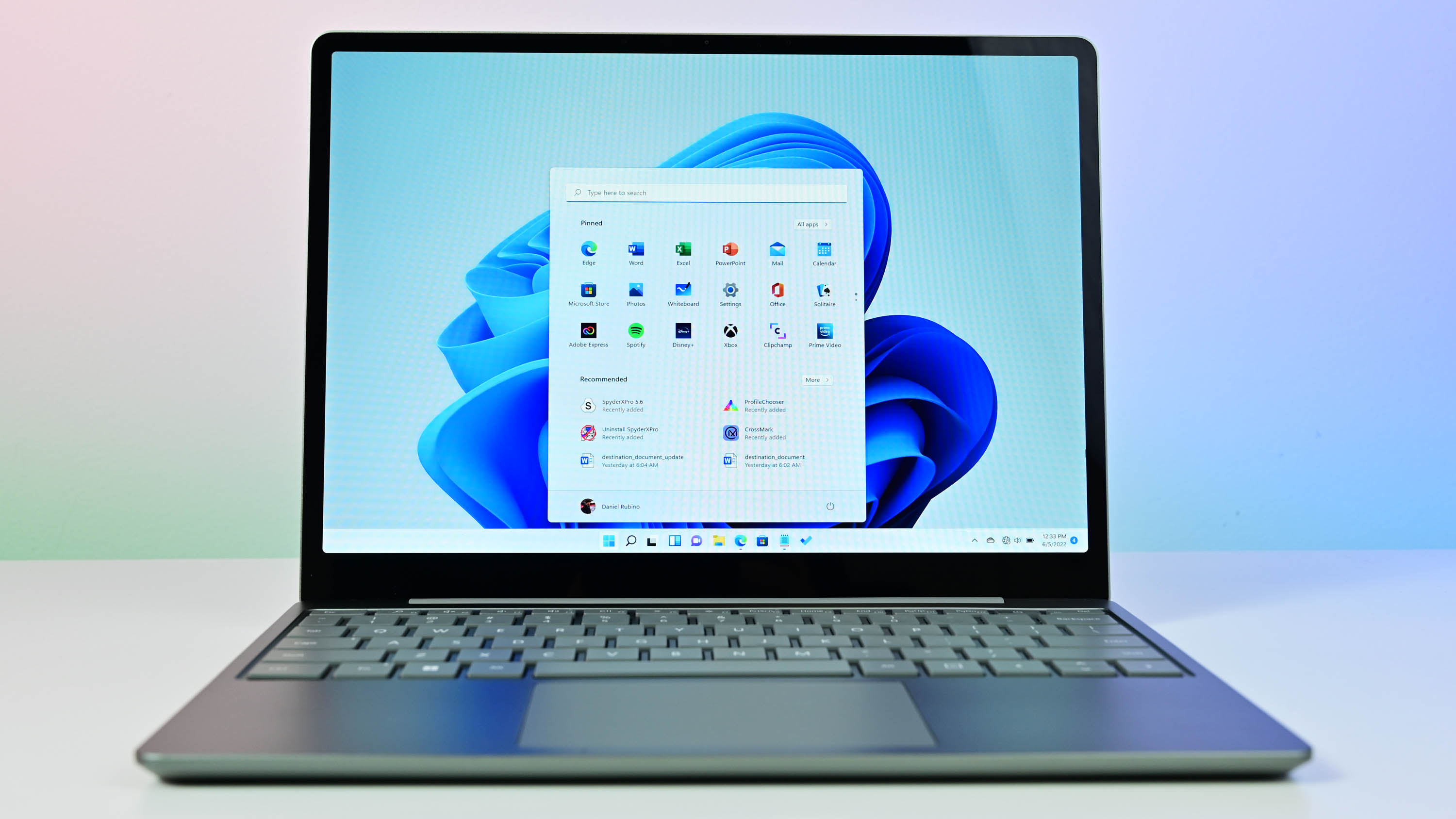
The 12.5-inch 1536×1024 touch display with 148 pixels-per-inch (PPI) pales compared to the premium Surface Laptop 4, but when keeping in mind that $599 starting price, it’s pretty good.
Microsoft rates the display for a modest 330 nits of brightness, but we garnered a better 363 nits. While that number is just below higher-end premium laptops, it’s not by much and is good enough to use outdoors in some shade. It’s worth noting that this screen can drop to two nits at zero percent, making it perfect for use in bed at night (which you’ll want to do because of its size) as it won’t blind you.
Color accuracy is the same as the first model: 98% sRGB, 74% AdobeRGB, and 78% DCI-P3. The display does look slightly punchier once calibrated, where 99% sRGB can be attained. This display is more than fine for web browsing, email, non-professional photo editing, watching movies, and more, but it is still miles behind third-gen OLED displays shipping in many high-end 2022 laptops.
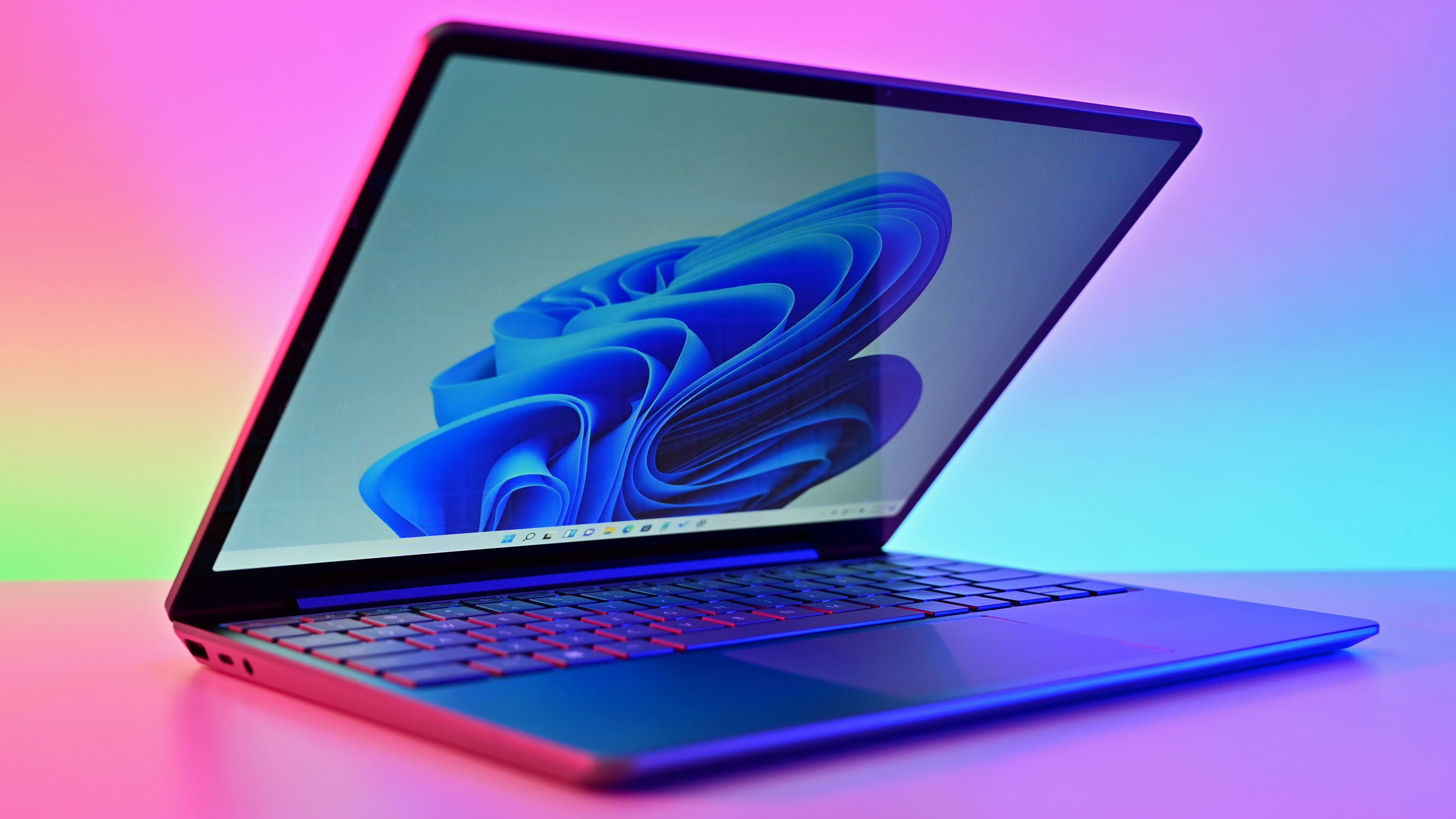
The bezels are also very thin and aesthetically pleasing, especially when compared to other laptops in this price range. There is a bit of a chin, but that helps make the keyboard deck longer and more comfortable for typing.
The audio is very good, thanks to Microsoft’s “Omnisonic” speakers. The speakers are cleverly located below the keyboard deck, allowing no visible speaker grills to tarnish Laptop Go 2’s clean design. No other company does this, and it’s an impressive feat. The speakers are clear and can reach more than sufficient volume. There is no Dolby Atmos to optimize the sound with more spatial presence due to the price point, but it has Dolby Premium Audio.
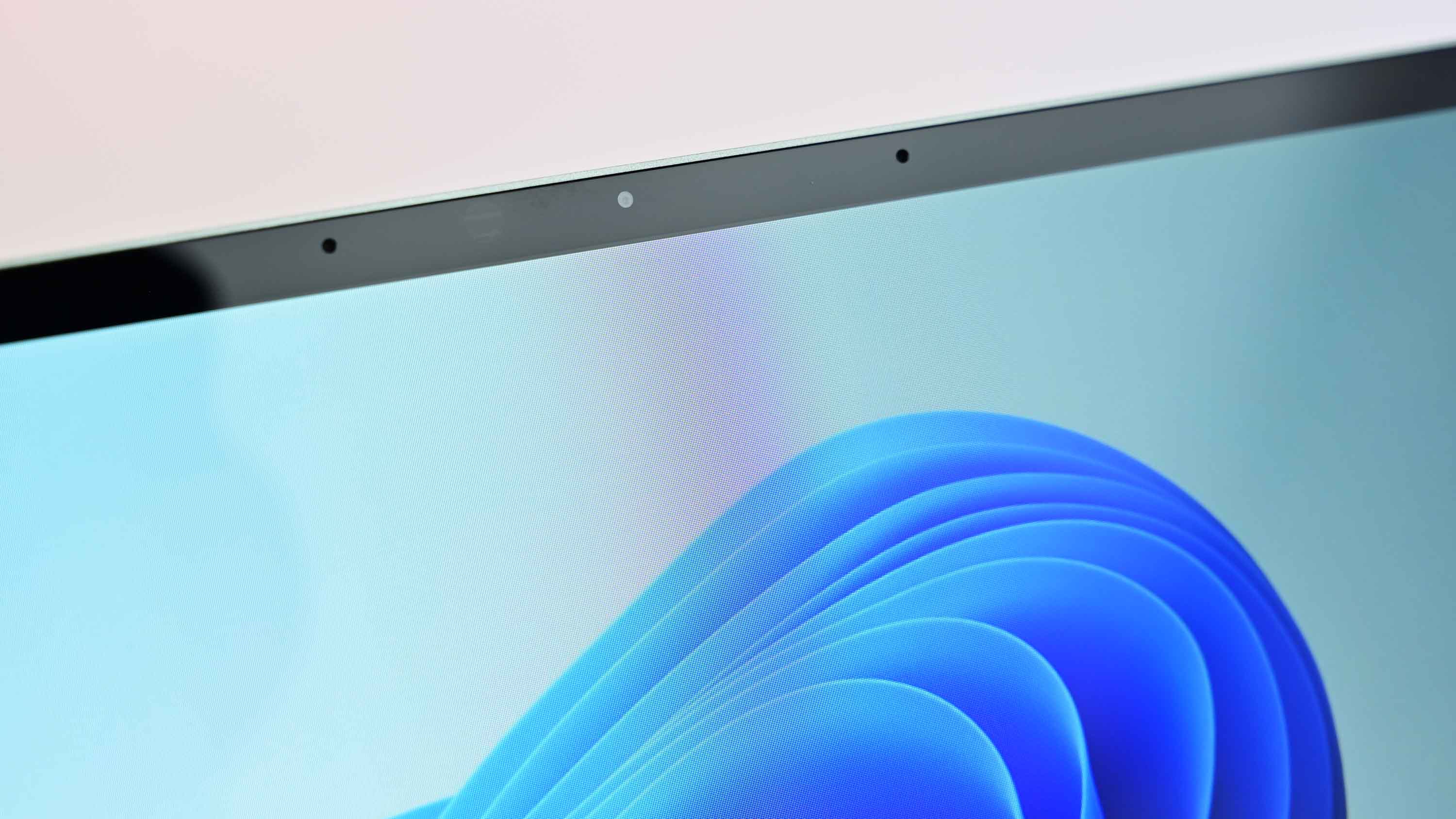
Microsoft puts a lot of effort into webcam usage. There are two microphones, each flanking the 720P webcam, and that camera is slightly improved, according to Microsoft. In our use, the 720P camera does look a bit sharper with more detail. However, it is still below the now industry-standard full HD (1080P) cameras for more expensive laptops. But, again, comparatively, the Surface Laptop Go 2 is untouched at this price level for camera and audio quality, and it’s not even close.
Keyboard, touchpad, fingerprint
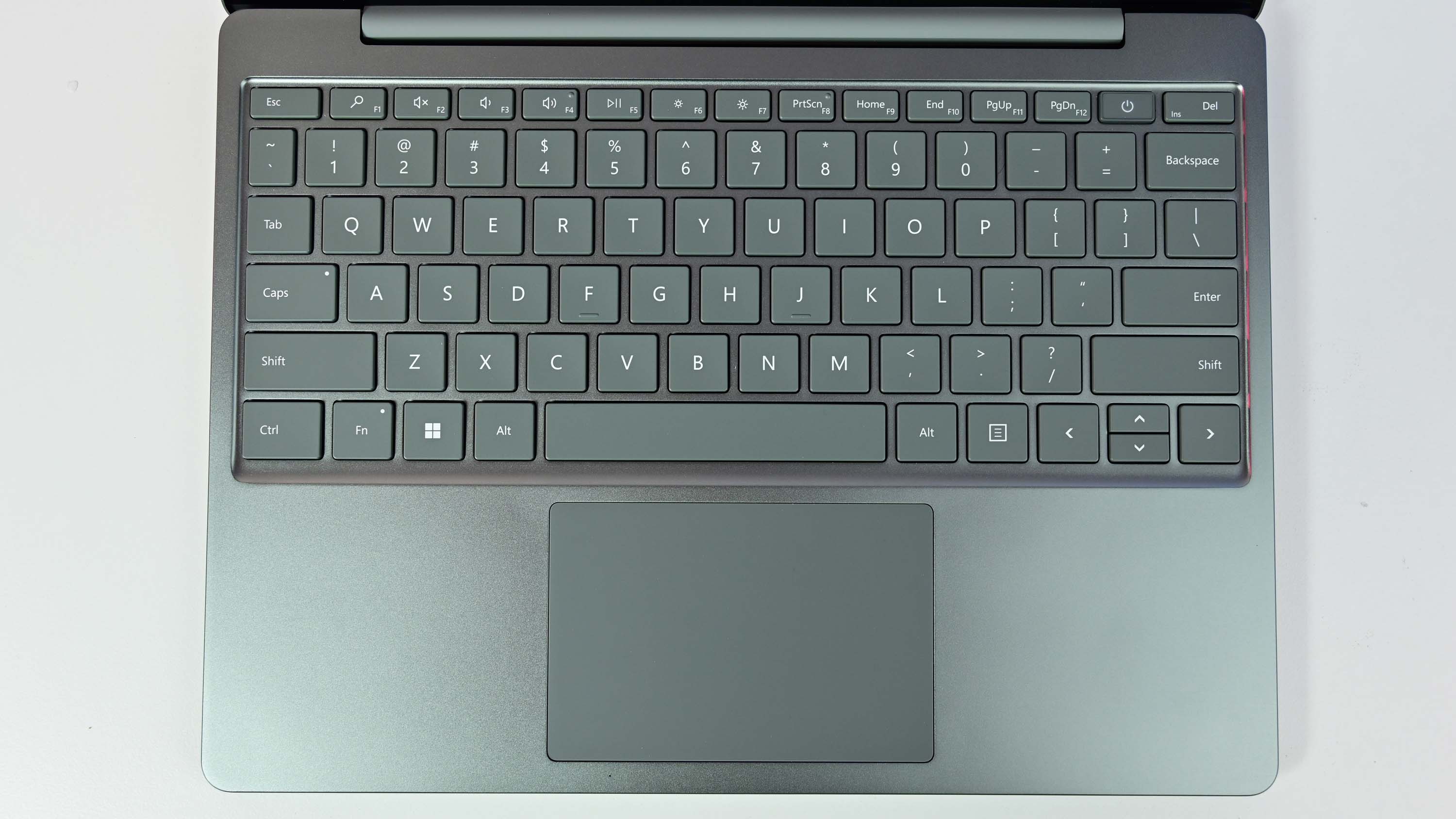
The keyboard on Surface Laptop Go 2 is outstanding, and 1.3mm of key travel is close to the ideal 1.4mm found in many Lenovo laptops. Compared to Surface Go 3, the keys are slightly larger, and typing feels less cramped as the Surface Laptop Go 2’s deck is a significant 1.25-inches (31.75mm) wider.
And like the 2020 model, there is one keyboard sore spot: There is no backlighting. Indeed, this was the one major issue we had with the original Surface Laptop Go, and Microsoft did not address it with this newer model. No backlight helps keep that cost down (and battery life up), and while it’s far from a dealbreaker, it would have been great to see it here.
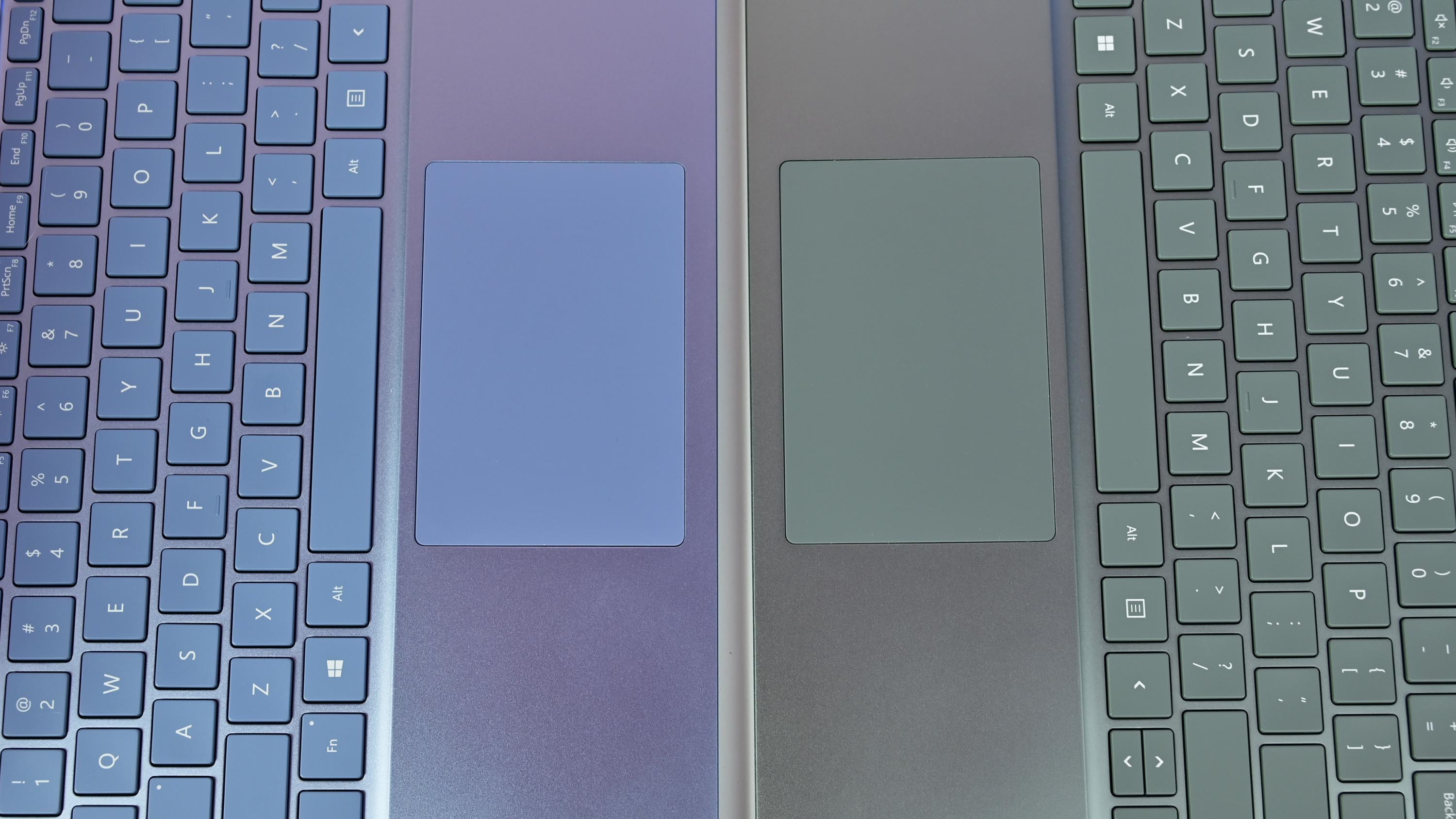
The Precision touchpad is large, glass, smooth, has an excellent click, and feels very premium. It works well, is accurate, and we had no issues with it.
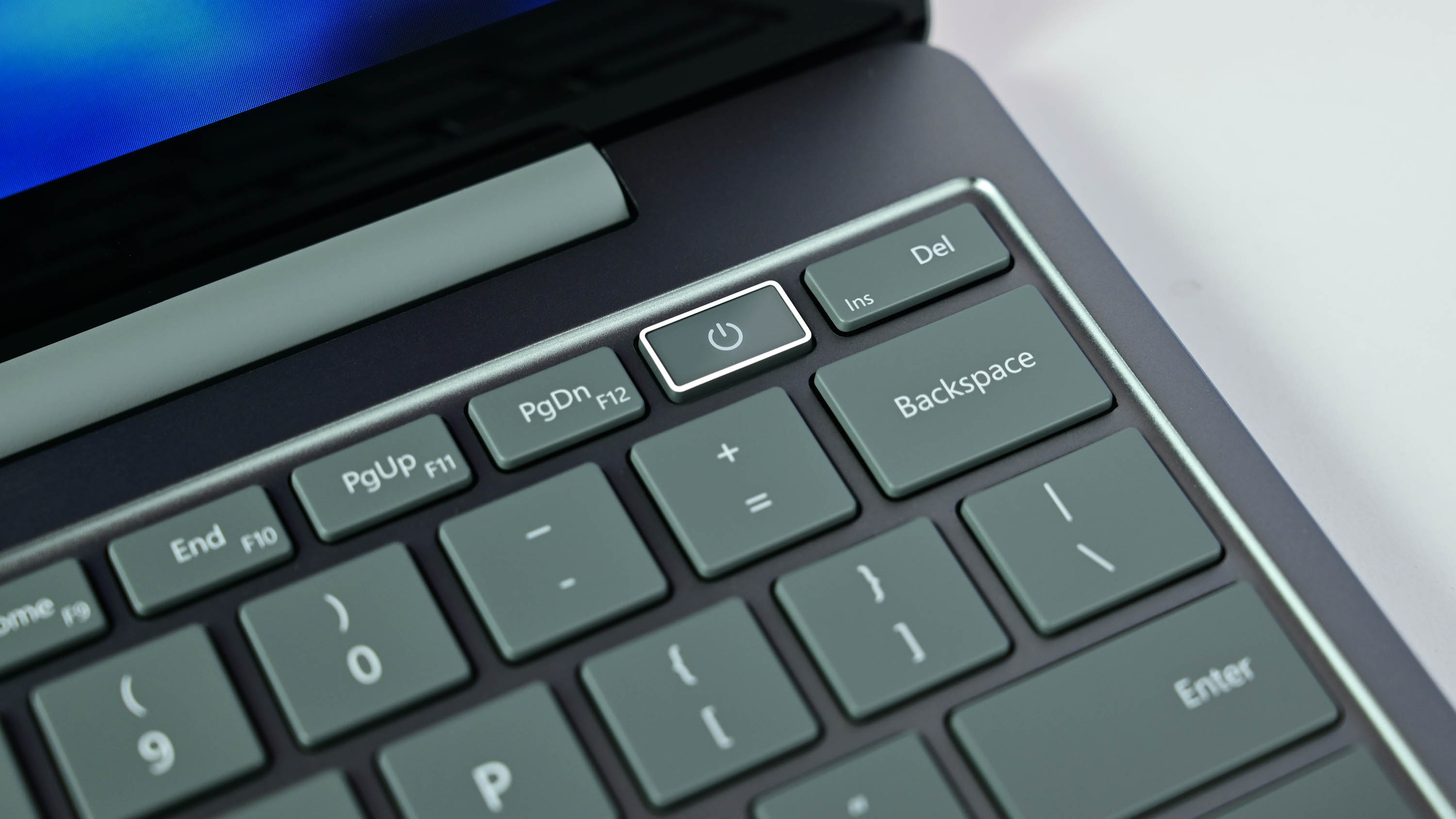
Like its predecessor, the Surface Laptop Go 2 does not have an infrared sensor for Windows Hello to log you into Windows 11 without a password. Instead, it relies on a fingerprint reader built into the power button. That button has an LED that lights up when the laptop is turned on, cleverly calling your attention. It works better than most laptop fingerprint readers and has never failed during our testing.
The entry-level $599 Surface Laptop Go 2 model omits the fingerprint reader. That’s a shame as not using a password is very convenient.
Performance and battery
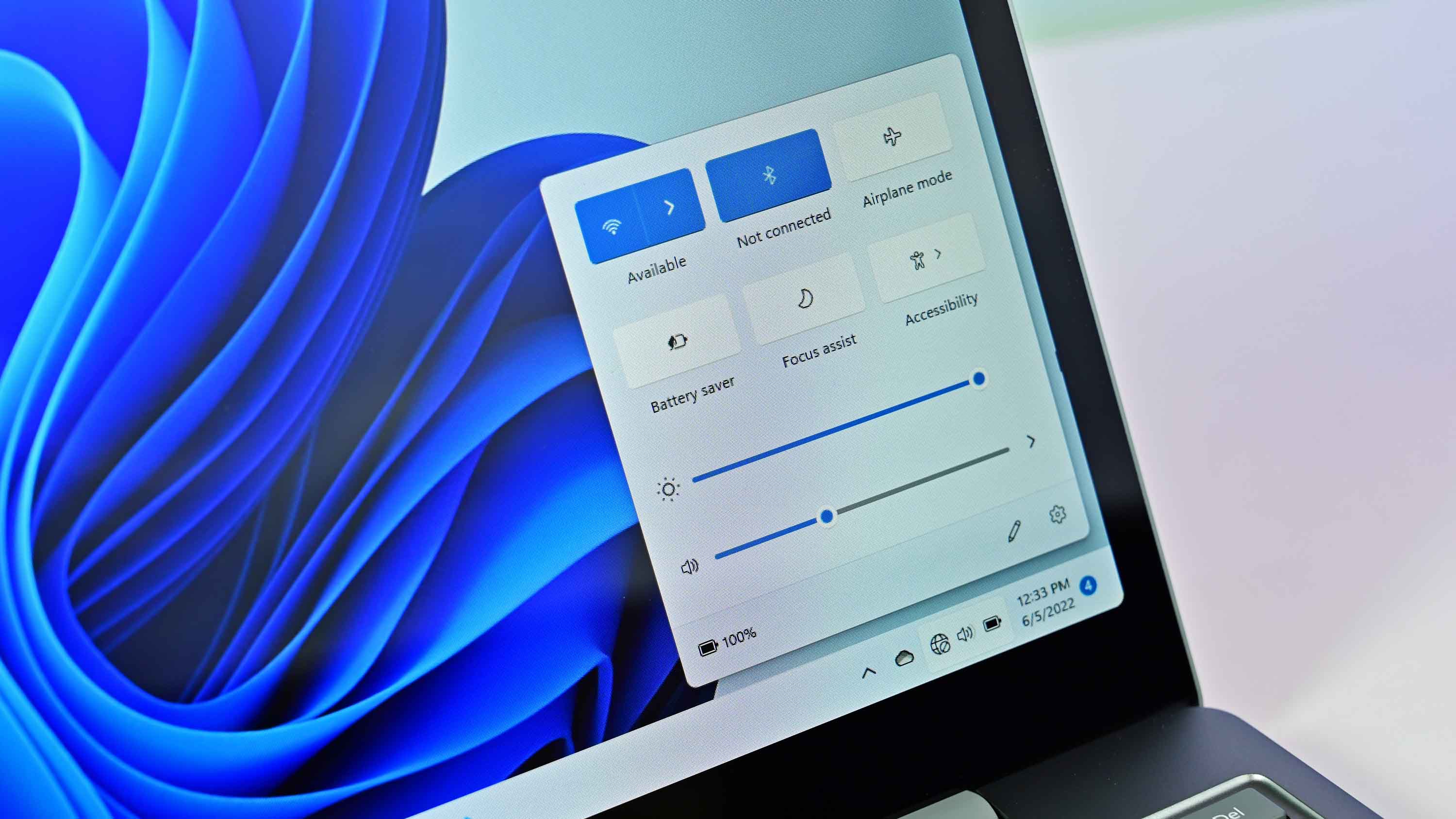
Unlike the Surface Go series, which are fanless and are powered by lower-end 10th Gen Pentium Gold or a Core i3 processor, the Surface Laptop Go 2 has a single fan to cool it and a much more powerful 11th Gen Core i5. That processor is also a significant bump over the 10th Gen Core i5 from the first model, although it still falls short of other premium laptops that use the same CPU.
On Cinebench 23, which taxes only the CPU in single-core and multi-core benchmarks, the Core i5-1135G7 earned 3,982 compared to the 3,237 on multi-core from the Core i5-1035G1, a 23% improvement. Likewise, single-core saw a 21% jump with the newer chip. On Geekbench 5, a CPU-focused task, the Surface Laptop Go 2 earns 4,214 compared to the original 3,237 — a 30% improvement.
Turning to PCMark 10, which utilizes both the improved CPU and greatly enhanced Iris Xe GPU plus the SSD, Surface Laptop Go 2 peaks at 4,537 compared to Surface Laptop Go’s 3,163 — an impressive 43% bump in overall system performance.
All CPU/GPU benchmarking tests were performed on “Best performance” and not the default “Recommended,” which works to scale and conserve battery more smartly.
Even SSD performance has improved. Sequential read performance, what you’ll “feel” most of the time, jumped 20% to a respectable 2,414 MB/s. Sequential write speeds also increased by 103% to 1,613 MB/s compared to just 791 MB/s on the original Surface Laptop Go (SSD).
With that new CPU and GPU, you can certainly indulge in some 2D action platformers, rogue-like dungeon crawlers, or any other casual arcade-type game. But things like Minecraft Dungeons or AAA shooters are still off-limits for this hardware. Luckily, Microsoft will be happy to let you use its Xbox cloud gaming service to offset such hardware limitations.
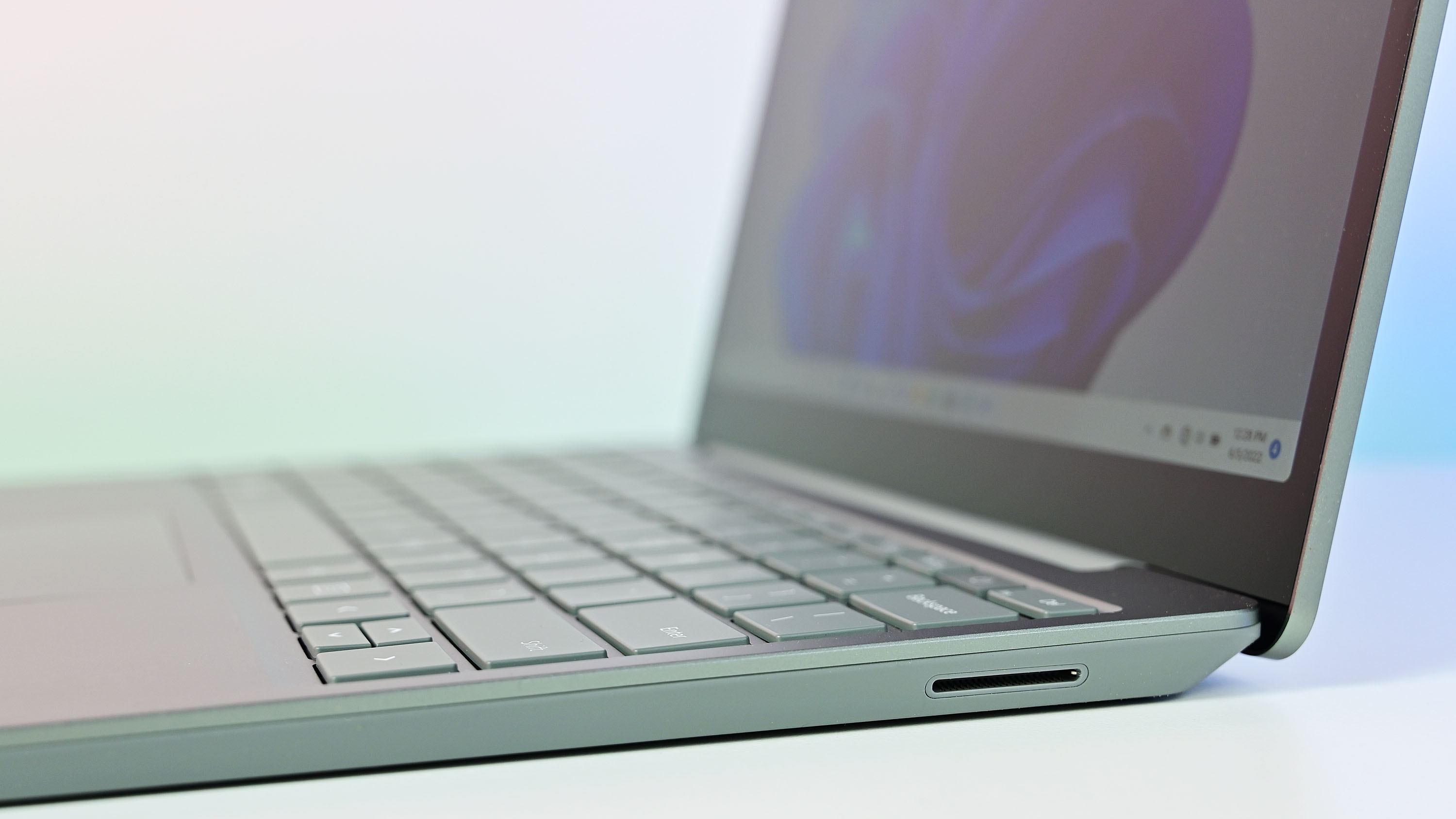
When testing the battery with PCMark Battery Modern Office, we disabled auto-screen brightness and auto-contrast, both employed to conserve battery, negatively affecting our results but being consistent. We ran both Surface Laptop Go and Surface Laptop Go 2 at a fixed 60% brightness just above 150 nits of brightness on the “Recommended” power setting. Surface Laptop Go 2, despite the significantly better performance, gained 1 hour and 15 minutes in longevity compared to the original model — a substantial improvement.
The real-world battery on the original Surface Laptop Go was between 7 and 8.5 hours, which means the Surface Laptop Go 2 should be an easy 8 to 9-hour machine depending on how hard you push it and how bright you keep the display. That’s not great battery life, but it should be “all day” for most people using this as a casual PC.
Interestingly, the fan on Surface Laptop Go 2 is quieter than the original’s when the CPU is maxed at 100% performance for 20 minutes. While the fan is audible at ~47dBa, it averaged up to 7 decibels lower than the original model at ~52dBA, making Surface Laptop Go 2 around 10% quieter, which is noticeable.
In another nod to Microsoft’s superior engineering, there are no visible intake grills on Surface Laptop Go 2. The air comes in and out at the rear of the keyboard, hidden by the display. This design looks clean (like no speaker grills), but it also means no hot air is blowing on your hands like side-vented systems. Nor will you block the air intake when using Surface Laptop Go 2 in your lap.
Conversely, Surface Laptop Go 2 runs warmer, peaking at around 116 degrees Fahrenheit (46.6 degrees Celsius) versus 106 degrees Fahrenheit (41 degrees Celsius) with Surface Laptop Go. That tells me that Microsoft may have tuned down the fan curve just enough to make the Surface Laptop Go 2 quieter at the expense of a little more heat. The degrees change is so minimal that you can’t feel the difference, and neither laptop can be classified as ever too hot or uncomfortable to use.
Competition
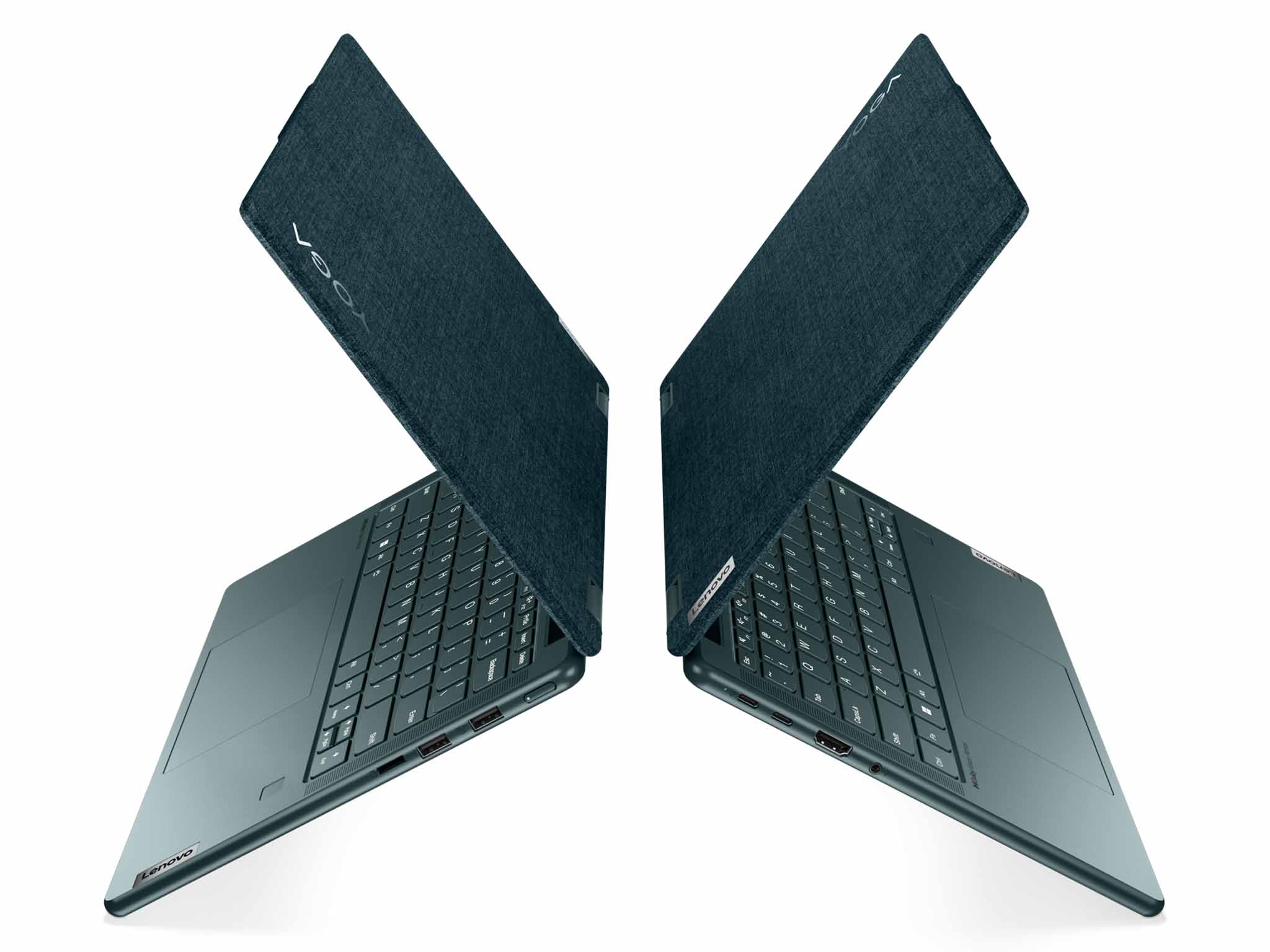
When you start pushing down to the $600 range, there aren’t many great options for Windows PCs, but a few are a better overall value.
HP has plenty of laptops in the $700 range, many of which will blow away the Surface Laptop Go 2 performance and features. The one caveat is the screen sizes available are either 15- or 17-inches, e.g., HP Laptop 15-dy2096nr, which is far bigger and heavier than Surface Laptop Go 2.
Lenovo has the impressive 13-inch Yoga 6 (AMD), which is a 2-in-1 design, with Dolby Vision, Dolby Atmos, Ryzen 5 5500U CPU, 8GB of RAM, 256GB of storage, full HD webcam, Bluetooth 5.2, has more ports, and a 1920×1200 glossy touchscreen for just $599 (on sale; regularly $859). It’s better than Surface Laptop Go 2 in just about everything you can imagine.
Dell also doesn’t have too much in this price range except older models, which also have 11th Gen Intel processors, so it’s relevant. The cheapest available is the excellent XPS 13 (9310) with a 1920×1200 touch display, 8GB of RAM, 256GB SSD, and a Core i3 processor for $853 on sale — about $53 more than the top-tier Surface Laptop Go 2.
You can see more affordable laptops in our laptops with 8GB of RAM guide.
Should you buy?
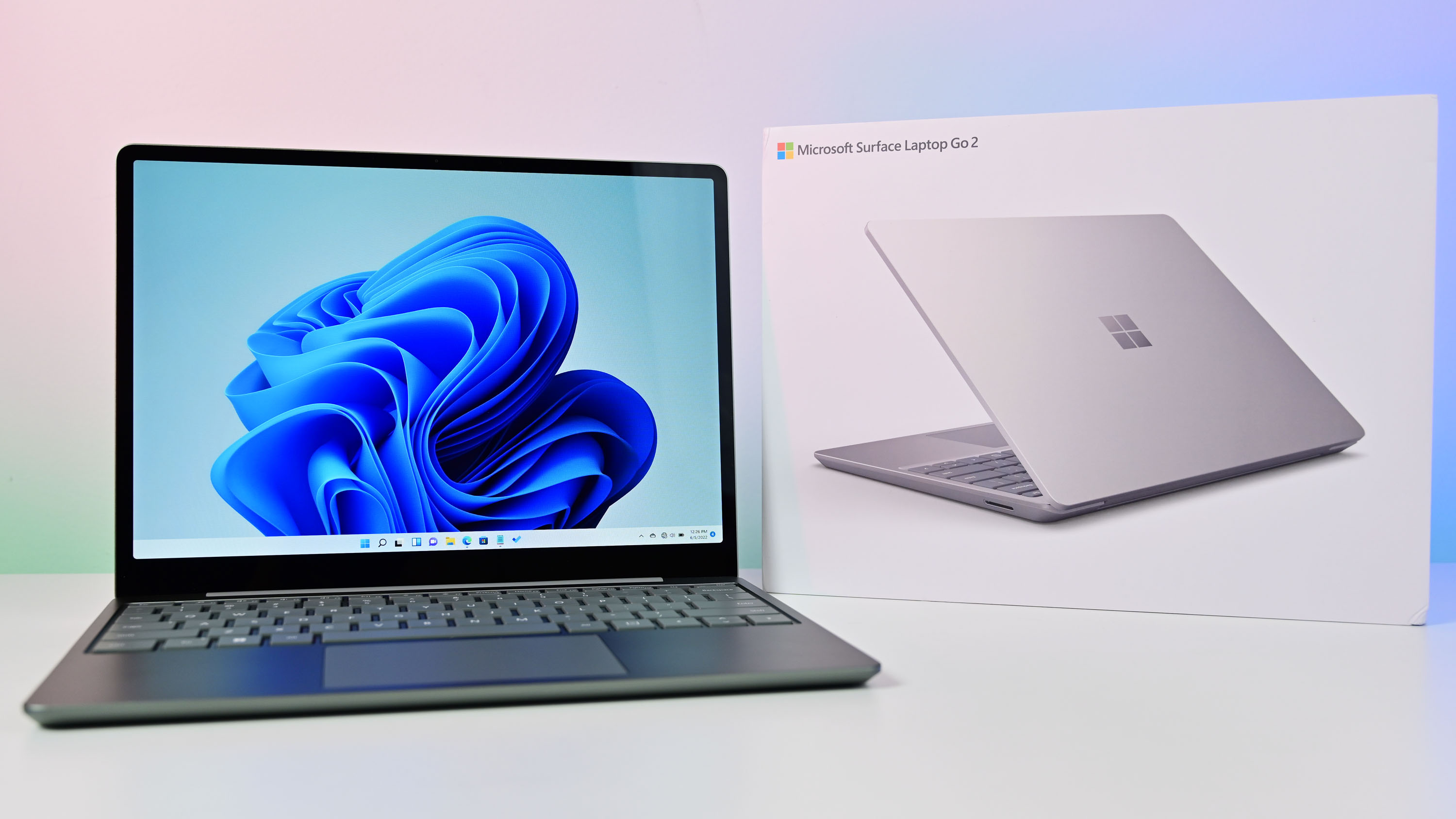
Who it’s for
- Anyone who wants a tiny, but capable Windows 11 laptop
- Casual users who work in Office, web, email, video meetings, watching movies
- Students who want something light for class
- Families who want to share an extra laptop
Who it isn’t for
- If you like to type in the dark
- If you need pen support or a 2-in-1 PC
- If you want to do a lot of video editing or gaming
Surface Laptop Go 2 is a modest upgrade over the previous model on paper, but using that new Core i5 makes it feel much more premium than you would expect. The lower top-tier $799 price makes the Surface Laptop Go 2 a worthy option for those who value a small, light laptop for mobility.
Who is this laptop for? Students, kids, as a family computer, or any adult who wants a small notebook for casual usage focusing on email, web, Office, light gaming, photo editing, or video meetings. While you could opt for a Google Chromebook instead with Surface Laptop Go 2, you still get the entire library of PC apps from the last 25 years. You could even use it on the go, then bring it home and plug in an external display (or three) to use it as your desktop PC.
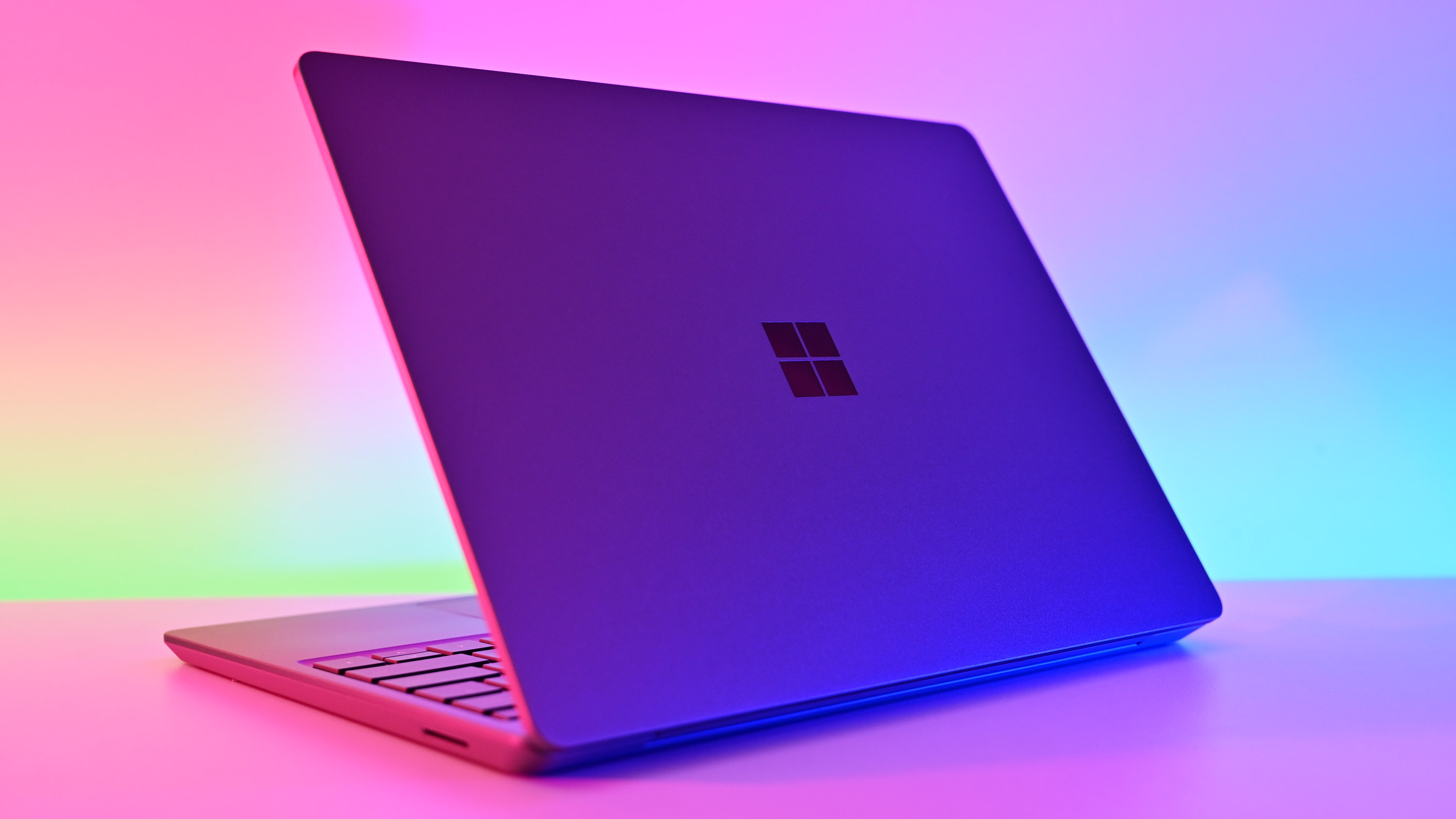
Although some will be repelled at the 4GB of RAM for the entry-level model, in casual usage Windows 11 is more than adequate at allocating memory appropriately, meaning there should not be any significant performance problems. That said, erring on the side of caution and getting the $699 model with 8GB of RAM is the safe bet (plus, you get the helpful fingerprint reader).
But what about those other options? There is no doubt there is still a “Surface tax” on this laptop, meaning you will pay more for it than the competition. For some, it’s worth it; for others, it’s not.
While Intel 12th Gen mobile would have been welcomed, those chips are more expensive and currently in very short supply even for premium laptops, making them a poor choice. We’ll likely see a 12th Gen Core i5 for Surface Laptop Go 3 in 18 months, give or take.
For those on the fence, when bought through Microsoft, customers get a 60-day return policy with their purchase (undamaged, original packaging) via the Microsoft Store Promise for Surface (opens in new tab). Eligible students, parents, teachers, and the military may also qualify for a 10 percent discount through Microsoft. Such a discount could bring the top-tier price down to $720 or the mid-level to a more palatable $630.
Microsoft has done just enough for Surface Laptop Go 2 to make it easy to recommend, which is a common theme with the Surface brand. Something about the overall quality makes Surface Laptop Go 2 enjoyable to use and a desirable laptop for those who like its design and features.
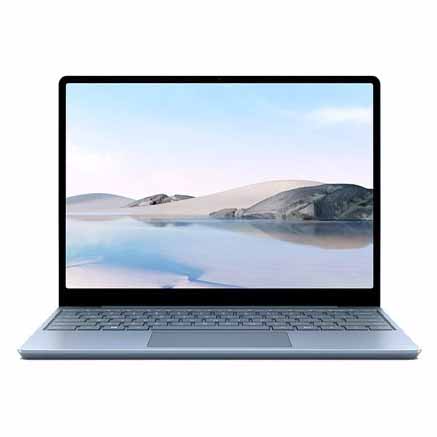
(opens in new tab)
Microsoft’s Surface Laptop Go 2 gets a modest upgrade, but it’s the new lower top-tier price that we really like. Plus, it looks great in green.




